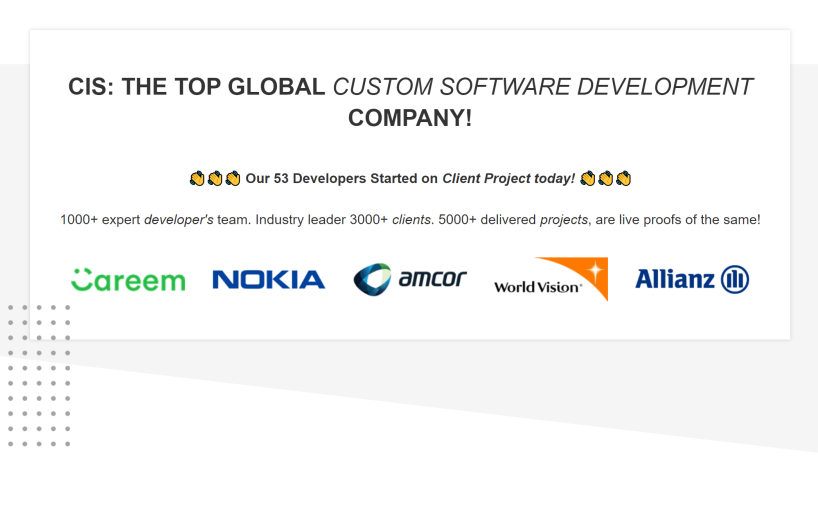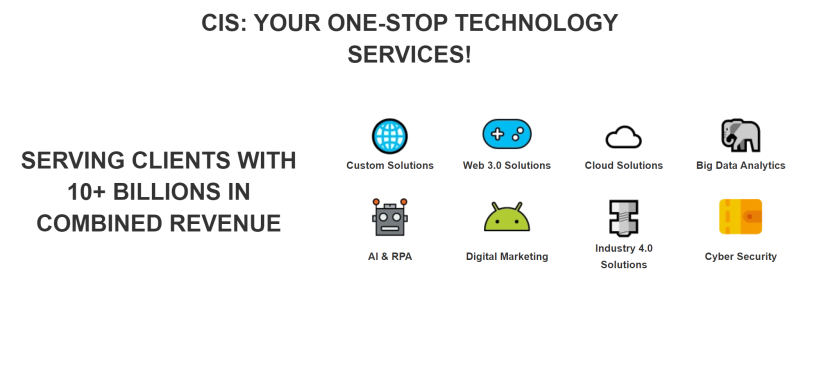Maximizing ROI: The Cost and Benefits of Adopting Sap For Talent Management And Hr for Your Business
- SAP for Talent management and HR - Detailed Analysis by Enterprise Solutions Experts
Request A Free Consultation - Why Use SAP For Talent Management And HR



Why Mid-size Companies and Enterprises needs SAP For Talent Management And HR:
Mid-size companies and enterprises need SAP for Talent Management and HR because it provides a comprehensive suite of tools to help them manage their human resources more effectively. It offers features such as recruitment, onboarding, training & development, performance management, compensation & benefits administration, workforce analytics & insights, and compliance management. These features enable organizations to better identify talent gaps in the organization; plan for future staffing needs; track employee progress; develop competencies and skillsets; create rewards programs that motivate employees; ensure legal compliance with labor laws; analyze data to make informed decisions about personnel strategies. In addition, SAP's cloud-based solutions provide scalability so businesses can easily grow without having to invest in additional hardware or software infrastructure. All these capabilities combined help mid-sized companies and enterprises maximize their return on investment from their human capital investments.
Benefits of using SAP For Talent Management And HR in Mid-size companies and Enterprises:
1. Increased Efficiency:
SAP for Talent Management and HR enables companies to streamline their recruitment, onboarding, learning and development, performance management and compensation processes with automated workflows. This helps reduce manual errors and speeds up the process of finding the right talent for a job.
2. Improved Performance:
By using SAP for Talent Management and HR, businesses can gain insights into employee performance through real-time data analysis that allows them to identify areas of improvement or opportunities for further training. This can help improve overall productivity in an organization by ensuring employees are working at peak efficiency levels.
3. Enhanced Engagement:
With SAP's integrated system, companies can better engage their workforce by providing personalized career paths tailored to each employee's skillset and interests as well as rewards programs that recognize outstanding achievements in order to keep employees motivated and engaged in their work..
4. Cost Savings:
Implementing an integrated system such as SAP for Talent Management & HR helps organizations cut down on costs associated with recruiting new staff members or developing existing ones since all processes are managed within one platform instead of multiple systems spread across several departmentsDetailed Features of SAP For Talent Management And HR for Mid-size companies and Enterprises:
1. Recruiting and Onboarding:
SAP for Talent Management and HR provides tools to streamline the recruitment process, including job postings, applicant tracking, onboarding documents and processes, background checks, offer letters, and more.
2. Performance Management:
This solution allows organizations to manage employee performance through goal setting, feedback management, succession planning, competency assessments and development plans. It also offers automated workflows for performance reviews.
3. Learning & Development:
SAP for Talent Management and HR helps companies deliver learning content effectively with its comprehensive library of courses available in multiple languages as well as a powerful search engine that enables users to find relevant information quickly. Additionally it supports blended learning approaches such as classroom sessions or webinars combined with online activities like e-learning or virtual simulations.
4. Compensation & Benefits Administration:
The software includes tools to help manage compensation packages including salary increases/decreases; bonus payments; overtime calculations; vacation time accrual; health insurance enrollment; 401K contributions; stock options management etc.. It also integrates with payroll systems so employees can easily view their paychecks online or via mobile devices if desired by the employer organization .
5. Workforce Analytics & Reporting:
With this feature users are able to track workforce trends such as turnover rates , absenteeism patterns , average tenure , diversity metrics etc., allowing them to make better decisions about talent acquisition strategies , training needs assessment etc.. In addition it provides detailed reporting capabilities on all aspects of human capital management from recruiting statistics to individual employee performance ratings .Who are the Users of SAP For Talent Management And HR:
The customers using SAP for Talent Management and HR include organizations of all sizes across various industries, such as healthcare, manufacturing, retail, banking and finance, hospitality and travel services. These organizations range from small businesses to large multinational corporations.
How to ensure Data Security and Compliance with SAP For Talent Management And HR:
1. Ensure your SAP system is up-to-date and secure:
Make sure that you are running the most recent version of SAP software with all necessary updates and patches applied to ensure data security. Additionally, use password policies and two-factor authentication to help protect against unauthorized access.
2. Implement a comprehensive data privacy program:
Establish a comprehensive set of best practices for collecting, storing, using, and sharing employee information in compliance with applicable laws and regulations such as GDPR or CCPA. This should include clear procedures for handling sensitive personal data as well as regular reviews of employee records to ensure accuracy and integrity of the information stored in your Talent Management & HR systems.
3. Train employees on security protocols:
Educate employees on how to securely handle confidential information within their roles, including proper usage guidelines for company devices like laptops or tablets used when accessing HR systems remotely from home or other locations outside the office environment.
4. Utilize role-based access control (RBAC):
RBAC allows you to assign specific permission levels based on job functions so that only authorized personnel can view certain types of sensitive information within an organization's Talent Management & HR systems - preventing any accidental breaches due to user errors or malicious intent by restricting access rights accordinglyHow SAP For Talent Management And HR can increase organization Productivity, Agility, and Profitability:
SAP for Talent Management and HR can increase organization productivity, agility, and profitability by streamlining the recruitment process to identify the most suitable candidates quickly. It provides access to a wide range of employee data in order to make informed decisions about hiring, training, and promotion. Additionally, it allows organizations to track performance goals more precisely which leads to improved employee engagement and motivation. Finally, it provides tools for managing workforce costs more effectively which can result in increased efficiency and cost savings that directly impact organizational profitability.
How to Measure KPIs and increase Benefits of implementing SAP For Talent Management And HR in Mid-size companies and Enterprises:
1. Set measurable objectives:
Before implementing SAP for talent management and HR, it is important to set measurable objectives. These should include the desired outcomes of the implementation such as improved employee engagement, better recruitment processes, and increased efficiency in managing people data.
2. Track KPIs:
After setting measurable objectives, track key performance indicators (KPIs) throughout the implementation process to ensure that goals are met. Examples of KPIs include time-to-hire, cost savings from automation of manual tasks, number of employees with updated skillsets or certifications achieved through training programs enabled by SAP, employee satisfaction scores after using new tools provided by SAP etc.
3. Analyze results:
Once KPIs have been tracked over a period of time, analyze the results to identify areas where improvement can be made and determine if any additional resources need to be allocated for further optimization efforts or if more comprehensive solutions may be necessary moving forward.
4. Increase benefits:
Finally use the analysis findings to increase benefits derived from implementing SAP for talent management and HR in mid-size companies and enterprises by focusing on areas identified as needing improvement or requiring additional resources/solutions while also leveraging existing successes achieved via KPI tracking efforts during initial stages of implementation process .How SAP For Talent Management And HR can increase Employee Morale in your organization:
SAP for Talent Management and HR can increase organization employee morale by providing employees with tools to help them develop their skills, manage their performance, and recognize their accomplishments. It can also provide a platform for open communication between managers and employees. This helps build trust within the organization and encourages collaboration. Additionally, SAP for Talent Management and HR can be used to create an environment of recognition where employees feel appreciated for their work which in turn boosts morale.
How SAP For Talent Management And HR is Better than its Competitors:
SAP for Talent Management and HR is better than its competitors because it provides a comprehensive suite of tools to help organizations manage their entire employee lifecycle. It offers powerful functionality that enables companies to attract, recruit, onboard, develop, retain and engage top talent. This helps organizations create high-performing teams while reducing turnover costs. SAP also allows users to access real-time data analytics and insights into their workforce performance, giving them the ability to make informed decisions on how best to optimize their human capital investments. Additionally, SAP's intuitive user interface makes it easy for administrators to quickly configure settings and manage employee records with ease.
Cost to Develop & Implemention of SAP For Talent Management And HR:
The cost of developing and deploying SAP for Talent Management and HR will vary depending on the scope, complexity, customization requirements, and size of your organization. Generally speaking, you can expect to pay anywhere from $50,000 to over a million dollars for this type of implementation.
Why outsourcing implementation services for SAP For Talent Management And HR is better for Mid-size companies and Enterprises:
Outsourcing implementation services for SAP for Talent Management and HR is beneficial to mid-size companies and enterprises because it helps them save time, money, and resources. Outsourced providers are often more experienced with the software than internal teams and can quickly implement solutions that meet businesses' specific needs. Additionally, outsourced providers can provide ongoing support throughout the life of the project to ensure optimal performance. This reduces costs associated with training new employees or hiring additional staff to manage the system internally. Finally, outsourced providers have access to a wide network of industry professionals who may be able to help identify opportunities for improvement or suggest strategies that could result in greater efficiency.


